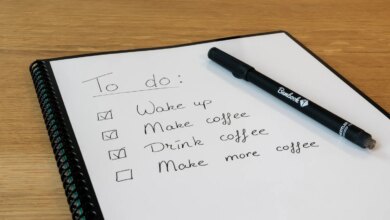Discover mindful movement for daily wellbeing now

Do you ever feel like your thoughts are racing, your chest is tight, or you just can’t seem to shake a feeling of unease? Life throws a lot at us, and it’s completely normal to experience stress and anxiety. But constantly feeling overwhelmed isn’t healthy. What if I told you there’s a powerful, accessible tool right at your fingertips to help manage those feelings? It’s not a quick fix, but a consistent practice that can truly transform your wellbeing. We’re talking about mindful movement – and it doesn’t necessarily mean grueling gym sessions! This is about finding activities that connect you to your body and calm your mind. This article will explore how different types of movement can be incredibly effective exercise for stress and anxiety, offering practical tips to get you started, and helping you discover what works best for you. We’ll look beyond traditional workouts and delve into practices like yoga, walking, and even simple stretching routines. It’s time to move towards a calmer, more centered you.
Key Takeaways
- Mindful movement is a powerful tool for managing stress and anxiety.
- Yoga, walking, stretching, and dancing are all excellent options for exercise for stress and anxiety.
- Focus on the sensation of movement, rather than achieving a specific fitness goal.
- Consistency is key – even 10-15 minutes of daily movement can make a difference.
- Breathing exercises can amplify the benefits of mindful movement.
- Finding an activity you enjoy is crucial for long-term adherence.
- Listen to your body and modify movements as needed.
Why Movement Helps with Stress and Anxiety
When we’re stressed or anxious, our bodies go into “fight or flight” mode. This releases hormones like cortisol and adrenaline, which can cause a racing heart, rapid breathing, and muscle tension. Physical activity for anxiety helps to counteract these effects. Exercise literally helps your body burn off those stress hormones. But it’s more than just a physical release. Movement also stimulates the production of endorphins, which have mood-boosting effects. Think of them as natural feel-good chemicals! This isn’t just anecdotal; research from Harvard Medical School highlights the connection between exercise and mental health, showing how regular physical activity can improve mood and reduce symptoms of anxiety and depression. It’s a natural way to regulate your nervous system and promote a sense of calm. Even gentle movement can shift your focus away from anxious thoughts and bring you into the present moment.
Yoga: A Mind-Body Connection
Yoga is often touted for its stress-reducing benefits, and for good reason. It combines physical postures (asanas), breathing techniques (pranayama), and meditation to create a holistic practice that calms both the body and mind. Specific poses, like Child’s Pose or Legs-Up-the-Wall Pose, are known for their relaxing effects. But it’s not just about the poses themselves. Yoga emphasizes mindful awareness – paying attention to your breath and the sensations in your body. This helps to ground you in the present moment and interrupt the cycle of anxious thoughts. You don’t need to be flexible to start yoga! There are many beginner-friendly classes and online resources available. Look for styles like Hatha or Restorative Yoga, which are generally slower-paced and more focused on relaxation. Yoga for anxiety can be a game-changer, but remember to listen to your body and modify poses as needed.
Walking: The Simple Power of Nature
Sometimes, the most effective exercise for stress and anxiety is also the simplest. Walking is a low-impact activity that’s accessible to almost everyone. And when you walk in nature – a park, forest, or even just a tree-lined street – the benefits are amplified. Studies have shown that spending time in nature can lower cortisol levels and improve mood. This is often referred to as “forest bathing” or Shinrin-yoku. Walking allows you to clear your head, process your thoughts, and connect with your surroundings. It’s a great way to break free from the confines of your own mind and gain a fresh perspective. Try to make walking a regular part of your routine – even a 20-30 minute walk each day can make a significant difference. Focus on your breath and the sensation of your feet hitting the ground.
Stretching: Releasing Tension
Stress often manifests as physical tension in the body – tight shoulders, a clenched jaw, or a stiff neck. Stretching can help to release this tension and restore a sense of ease. Simple stretches, like neck rolls, shoulder stretches, and hamstring stretches, can be done anywhere, anytime. Hold each stretch for 20-30 seconds, and focus on your breath. As you exhale, try to release even more tension. Stretching exercises for anxiety don’t require any special equipment or training. You can find plenty of guided stretching routines online. The key is to move slowly and mindfully, paying attention to your body’s signals. Don’t push yourself beyond your limits.
Dancing: Move Your Body, Lift Your Spirits
Who says exercise for stress and anxiety has to be serious? Dancing is a fun and liberating way to release endorphins and boost your mood. Put on your favorite music and just let loose! You don’t need to be a skilled dancer – just move your body in a way that feels good. Dancing can help you to express your emotions, release pent-up energy, and connect with your inner joy. It’s a great way to forget about your worries and simply be present in the moment. Whether you’re dancing in your living room, taking a dance class, or going out with friends, dancing is a powerful way to reduce stress and anxiety. Consider trying different styles – Zumba, salsa, or even just freestyle dancing.
Breathing Exercises to Enhance Movement
Combining mindful movement with conscious breathing can amplify the benefits. Deep, diaphragmatic breathing helps to activate the parasympathetic nervous system, which is responsible for the “rest and digest” response. This counteracts the “fight or flight” response and promotes a sense of calm. Try these breathing exercises during your movement practice:
- Box Breathing: Inhale for 4 counts, hold for 4 counts, exhale for 4 counts, hold for 4 counts. Repeat several times.
- Alternate Nostril Breathing: Close one nostril with your finger and inhale through the other. Then close the other nostril and exhale through the first. Continue alternating.
- Ujjayi Breath: Slightly constrict the back of your throat as you breathe, creating a soft, ocean-like sound.
Creating a Consistent Practice
The key to reaping the benefits of exercise for stress and anxiety is consistency. Start small – even 10-15 minutes of daily movement can make a difference. Schedule your movement practice into your calendar, just like any other important appointment. Find an activity you enjoy, so you’re more likely to stick with it. Don’t be afraid to experiment with different types of movement until you find what works best for you. And remember to be kind to yourself. Some days you’ll feel motivated and energized, and other days you’ll feel less so. That’s okay. Just show up and do what you can. Regular physical activity is a gift you give to yourself.
Listening to Your Body
It’s important to listen to your body and respect its limits. Don’t push yourself too hard, especially when you’re feeling stressed or anxious. Modify movements as needed, and take breaks when you need them. If you experience any pain, stop immediately. Mindful movement is about nurturing your body, not punishing it. Pay attention to the sensations in your body and adjust your practice accordingly. This is about self-care, not self-discipline. Gentle exercise for anxiety is often more effective than intense workouts.
Conclusion
You’ve taken the first step by recognizing the power of mindful movement to combat stress and anxiety. Remember, it’s not about achieving a perfect workout or transforming your body overnight. It’s about finding activities that connect you to your body, calm your mind, and bring you a sense of peace. Whether it’s yoga, walking, stretching, dancing, or a combination of all three, the possibilities are endless. Start small, be consistent, and most importantly, listen to your body. Embrace the journey of self-discovery and allow movement to become a powerful tool in your wellbeing toolkit. Don’t hesitate to explore different options and find what truly resonates with you. Take a deep breath, move your body, and rediscover your inner calm. You deserve it. Now, go ahead and schedule just 15 minutes of movement into your day – your mind and body will thank you.
FAQs
Q: What if I’m not very athletic?
A: That’s perfectly okay! Mindful movement isn’t about being athletic; it’s about connecting with your body and finding activities you enjoy. Start with gentle exercises like walking or stretching, and gradually increase the intensity as you feel comfortable. Low impact exercise for anxiety is a great place to begin.
Q: How often should I exercise for stress relief?
A: Aim for at least 30 minutes of moderate-intensity exercise most days of the week. However, even 10-15 minutes of daily movement can make a difference. Consistency is key!
Q: Can exercise actually help with panic attacks?
A: While exercise isn’t a cure for panic attacks, it can help to reduce their frequency and severity. Regular physical activity can regulate your nervous system and make you more resilient to stress. Exercise can help manage panic disorder symptoms.
Q: What’s the best time of day to exercise for anxiety?
A: The best time of day to exercise is whenever you’re most likely to stick with it. Some people find that morning exercise sets a positive tone for the day, while others prefer to exercise in the evening to unwind.
Q: Are there any exercises I should avoid if I have anxiety?
A: Avoid high-intensity exercises that might exacerbate your anxiety symptoms, such as strenuous cardio or competitive sports. Focus on gentle, mindful movements that promote relaxation.
We hope this article has inspired you to explore the benefits of mindful movement. Please share your thoughts and experiences in the comments below! And if you found this helpful, please share it with your friends and family.
Hi, I’m Sophia! Welcome to my blog Try Stress Management (trystressmanagement.com), where I share simple, down-to-earth ways to handle stress and bring more calm into everyday life. Think of me as your friendly guide, offering practical tips, reflections, and little reminders that we’re all figuring this out together.
When I’m not blogging, you’ll usually find me with a good book, sipping tea, or exploring new walking trails. I believe small changes can make a big difference—and that a calmer, happier life is possible for everyone.



